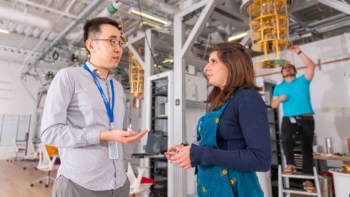Researchers at the University of Texas in Austin have formed molecules in a Bose-Einstein condensate (BEC) from a cloud of ultracold atoms for the first time. A Bose-Einstein condensate is a collection of atoms cooled to extremely low temperatures in which all the atoms occupy the same quantum state. The researchers used laser fields to induce pairs of rubidium atoms in a condensate to join together into molecules. The procedure, which allows the binding energies of the molecules to be measured with unprecedented precision, is the first step towards the creation of a molecular laser (Science 287 1016).
Molecules are poor candidates for the standard techniques used to create Bose-Einstein condensates because of their complicated internal vibrational and rotational structures. But by creating the molecules from atoms that are already inside a condensate, the Texas researchers have been able to put all the molecules into the same quantum state. The molecules, which have extremely low velocities, were at a temperature of just of 100 nanoKelvin. This allowed the researchers to perform a series of high-precision molecular spectroscopic measurements on the molecules. Indeed, their measurements of the molecular binding energy were 10 000 times more precise than any other previous experiment. However, the research has not yet led to a molecular Bose-Einstein condensate: their studies were on mixtures of atoms and molecules called a ‘two-species’ BEC.



